Archive for Linguistics in the comics
October 30, 2011 @ 9:23 am· Filed by Mark Liberman under Computational linguistics, Linguistics in the comics
 That's the question on a t-shirt designed by John Allison, the author of the Bad Machinëry comic series:
That's the question on a t-shirt designed by John Allison, the author of the Bad Machinëry comic series:
Remember that dude? Always poppin' up in the corner? Wonder what he doin' now? Where he at now?
For those who are too young (or too old, or too fortunate in some other way) to have encountered the Microsoft's Office Assistant "Clippit", nicknamed "Clippy", the Wikipedia page may be helpful.
Read the rest of this entry »
Permalink
October 19, 2011 @ 5:23 am· Filed by Mark Liberman under Linguistics in the comics
Today's Girls with Slingshots opens with this exchange between Clarice and Tucker:
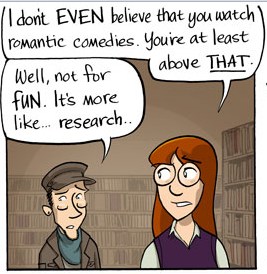
Clarice's contribution is a nice example of the new (?) negative-polarity emphatic even (discussed in "What does 'even' even mean?", 2/8/2011). Danielle Corsetto, the strip's author, puts this instance of emphatic even in caps to indicate prosodic focus, which emphatic even doesn't always have — perhaps some aspiring even-ologist can figure out why it sometimes does and sometimes doesn't.
Read the rest of this entry »
Permalink
October 17, 2011 @ 1:14 pm· Filed by Mark Liberman under Linguistics in the comics
The most recent Scenes From a Multiverse:
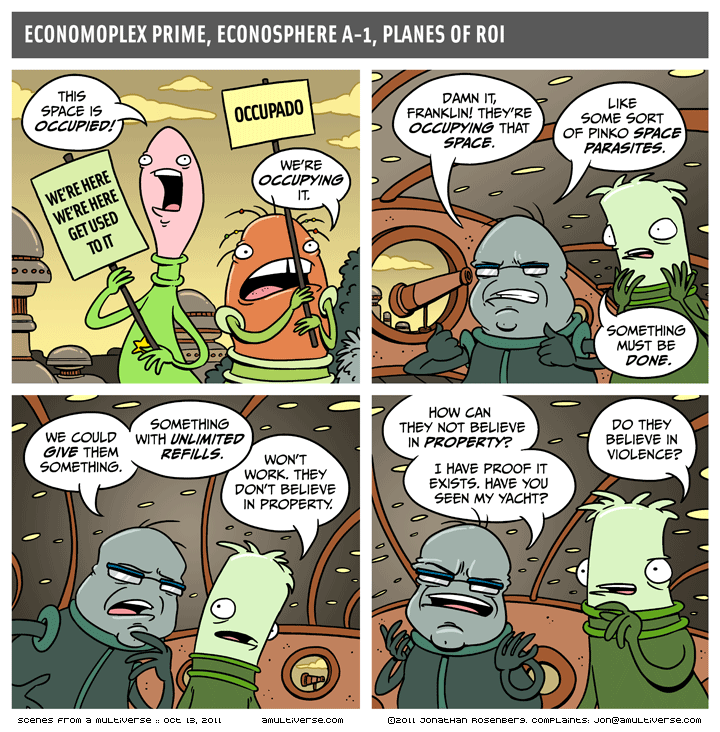
Read the rest of this entry »
Permalink
October 14, 2011 @ 5:50 am· Filed by Mark Liberman under Changing times, Computational linguistics, Linguistics in the comics
Yesterday's Doonesbury joins the parade of praise for Siri:

Read the rest of this entry »
Permalink
October 5, 2011 @ 6:41 am· Filed by Mark Liberman under Linguistics in the comics
From HappySad at Kartoen.be:
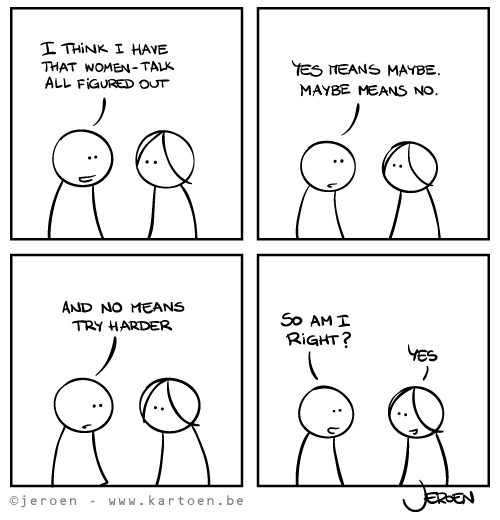
Read the rest of this entry »
Permalink
October 2, 2011 @ 7:01 am· Filed by Mark Liberman under Linguistics in the comics, Snowclones
Josh Fruhlinger was morpho-syntactically unhappy about Shoe for 9/21/2011 ("Josh puts the 'long' in 'long-winded'", The Comics Curmudgeon 9/21/2011):

Read the rest of this entry »
Permalink
September 28, 2011 @ 6:35 am· Filed by Mark Liberman under Linguistics in the comics
The most recent xkcd:
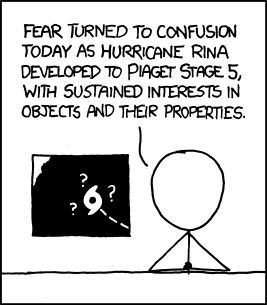
Mouseover title: "Funding was quickly restored to the NHC and the APA was taken back off hurricane forecast duty."
Read the rest of this entry »
Permalink
September 24, 2011 @ 11:28 pm· Filed by Julie Sedivy under Linguistics in the comics, Semantics
We've had several posts recently (here and here) showcasing the humorous consequences of interpreting quantifiers overly literally, with a blind eye to the usual contextual limits on their domain of interpretation. The following comic illustrates another possible pragmatic failure when it comes to quantifiers:

Read the rest of this entry »
Permalink
September 22, 2011 @ 11:15 am· Filed by Mark Liberman under Linguistics in the comics
Today's Dilbert picks up the theme of obtuse interpretation of quantifier domain restrictions, recently featured (less succinctly) here in "Shel Silverstein's hot dog and the domain of 'everything'" and "Dogless in Albion".

Permalink
September 21, 2011 @ 1:07 pm· Filed by Ben Zimmer under Language and technology, Linguistic history, Linguistics in the comics, Writing systems
In a great use of comic art, Roy Boney Jr. has created a graphic feature for the magazine Indian Country Today about the history of the Cherokee syllabary developed by Sequoyah in the early 19th century. Boney begins with the syllabary's inception and early use, and continues all the way through technological developments like the Selectric typewriter and Unicode standardization. Check it out here.
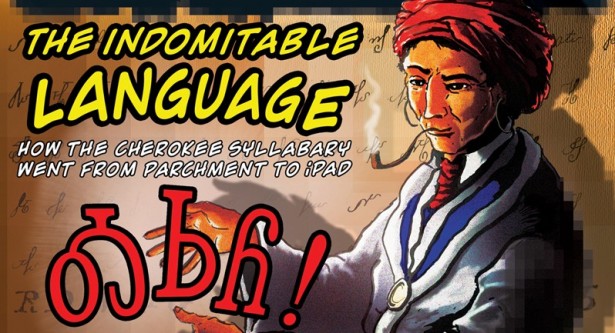
Permalink
September 20, 2011 @ 5:45 am· Filed by Mark Liberman under Linguistics in the comics
9 Chickweed Lane for 9/20/2011:

Reader AB asks:
As a non-native speaker, I find the use of both 15-foot and 15 feet within the same text balloon puzzling (third panel). Is there an explanation?
Read the rest of this entry »
Permalink
September 12, 2011 @ 9:32 pm· Filed by Mark Liberman under Language and culture, Linguistics in the comics
Today's Zits:

Read the rest of this entry »
Permalink
September 7, 2011 @ 4:41 pm· Filed by Geoffrey K. Pullum under Linguistics in the comics, Morphology, Syntax
After several days, I'm still thinking about the very funny Dilbert strip of September 1, at http://www.dilbert.com/fast/2011-09-01/, which made me laugh out loud. Alice is asked by her boss to simplify the wording on a slide so that it can be explained to the company's executives. She does not suffer fools gladly and her immediate suggestion for the simplified wording is: "MONEY BE GOOD. THIS MAKE MORE. OOGAH!". What I'm thinking about is the nature of the stereotype Alice has concerning the sort of language that would be understandable to people like company executives who are (in Alice's jaundiced opinion) virtually brainless.
Read the rest of this entry »
Permalink
 That's the question on a t-shirt designed by John Allison, the author of the Bad Machinëry comic series:
That's the question on a t-shirt designed by John Allison, the author of the Bad Machinëry comic series:









